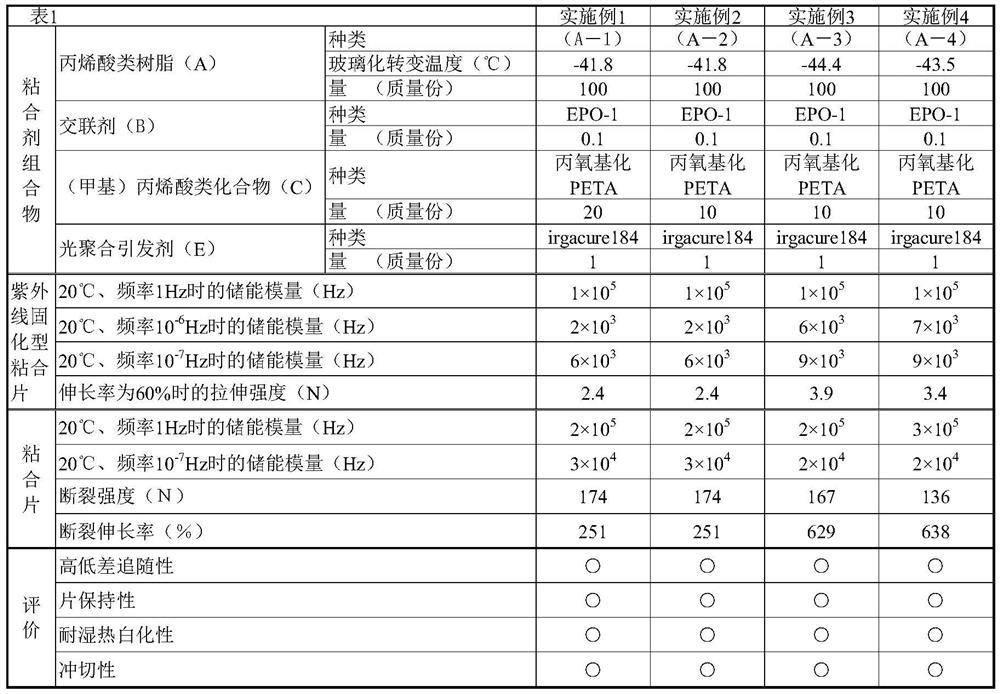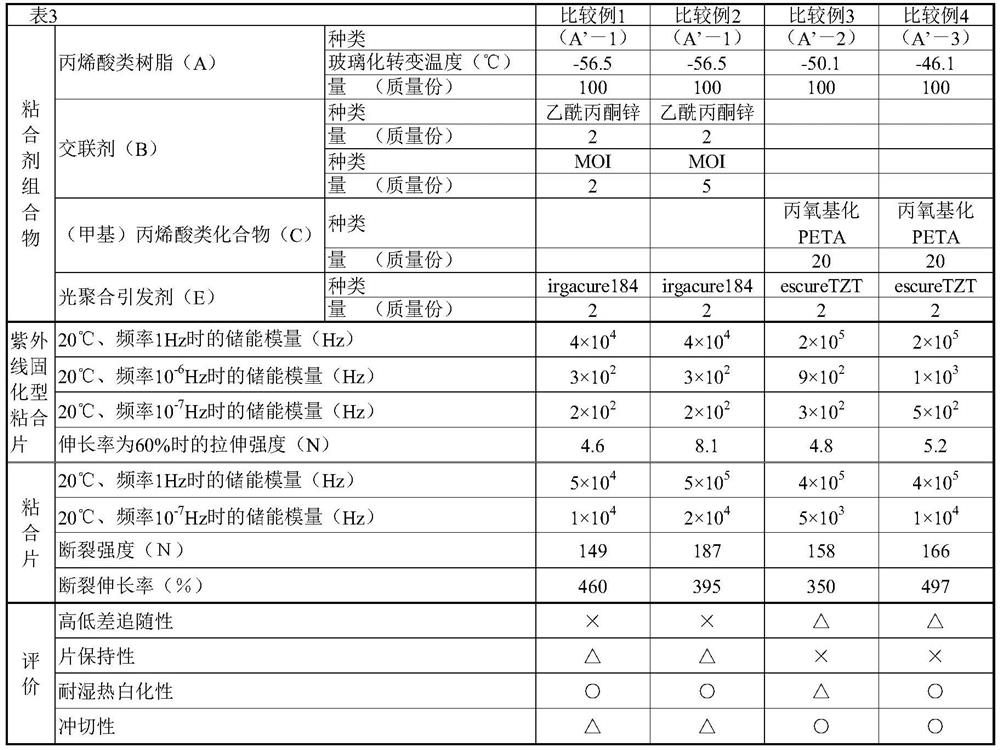UV-curable adhesive sheets and adhesive sheets
A technology of adhesive sheets and ultraviolet rays, applied in the direction of non-polymer organic compound adhesives, film/sheet adhesives, non-polymer adhesive additives, etc., can solve the problem of reducing resin crosslinking density, overflow viscosity, etc. Mixture, uneven film thickness and other problems, to achieve the effect of excellent resistance to heat and humidity whitening
- Summary
- Abstract
- Description
- Claims
- Application Information
AI Technical Summary
Problems solved by technology
Method used
Image
Examples
Embodiment
[0101] The present invention will be described in more detail below using examples.
Synthetic example 1
[0103]
[0104] 73 parts by mass of 2-ethylhexyl acrylate (hereinafter abbreviated as "2EHA"), dicyclopentanyl acrylate (manufactured by Hitachi Chemical Co., Ltd. " FA-513AS") 20 parts by mass, acrylic acid (hereinafter abbreviated as "AA") 5 parts by mass, 2-hydroxyethyl acrylate (hereinafter abbreviated as "HEA") 2 parts by mass, ethyl acetate 50 parts by mass, toluene 50 parts by mass portion, and the temperature was raised to 70° C. while blowing nitrogen gas under stirring. After 1 hour, 0.04 parts by mass of an azobisisobutyronitrile solution previously dissolved in ethyl acetate was added. Thereafter, after maintaining at 70° C. for 3 hours with stirring, the temperature was raised to 75° C., and 0.2 parts by mass of tetramethylbutylperoxyethylhexanoate and 1 part by mass of tert-hexyl peroxypivalate were added and kept for 5 hour, thereby obtaining the acrylic resin (A-1) with a non-volatile content of 50% by mass, a viscosity of 8,540 mPa·s, a weight-average molec...
Synthetic example 2
[0106]
[0107] Put 73 parts by mass of 2EHA, 20 parts by mass of FA-513AS, 5 parts by mass of AA, 2 parts by mass of HEA, and 100 parts by mass of ethyl acetate into a reaction vessel equipped with a stirrer, a reflux condenser, a nitrogen gas introduction tube, and a thermometer, and stir It heated up to 70 degreeC blowing nitrogen gas. After 1 hour, 0.04 parts by mass of an azobisisobutyronitrile solution previously dissolved in ethyl acetate was added. Thereafter, after holding at 70°C for 3 hours under stirring, the temperature was raised to 75°C and held for 5 hours to obtain a non-volatile content of 50% by mass, a viscosity of 49,900mPa·s, a weight average molecular weight of 740,000, and a number average molecular weight of Acrylic resin (A-2) with a temperature of 93,000 and a glass transition temperature of -41.8°C.
PUM
| Property | Measurement | Unit |
|---|---|---|
| glass transition temperature | aaaaa | aaaaa |
| glass transition temperature | aaaaa | aaaaa |
| glass transition temperature | aaaaa | aaaaa |
Abstract
Description
Claims
Application Information
 Login to View More
Login to View More - R&D
- Intellectual Property
- Life Sciences
- Materials
- Tech Scout
- Unparalleled Data Quality
- Higher Quality Content
- 60% Fewer Hallucinations
Browse by: Latest US Patents, China's latest patents, Technical Efficacy Thesaurus, Application Domain, Technology Topic, Popular Technical Reports.
© 2025 PatSnap. All rights reserved.Legal|Privacy policy|Modern Slavery Act Transparency Statement|Sitemap|About US| Contact US: help@patsnap.com



